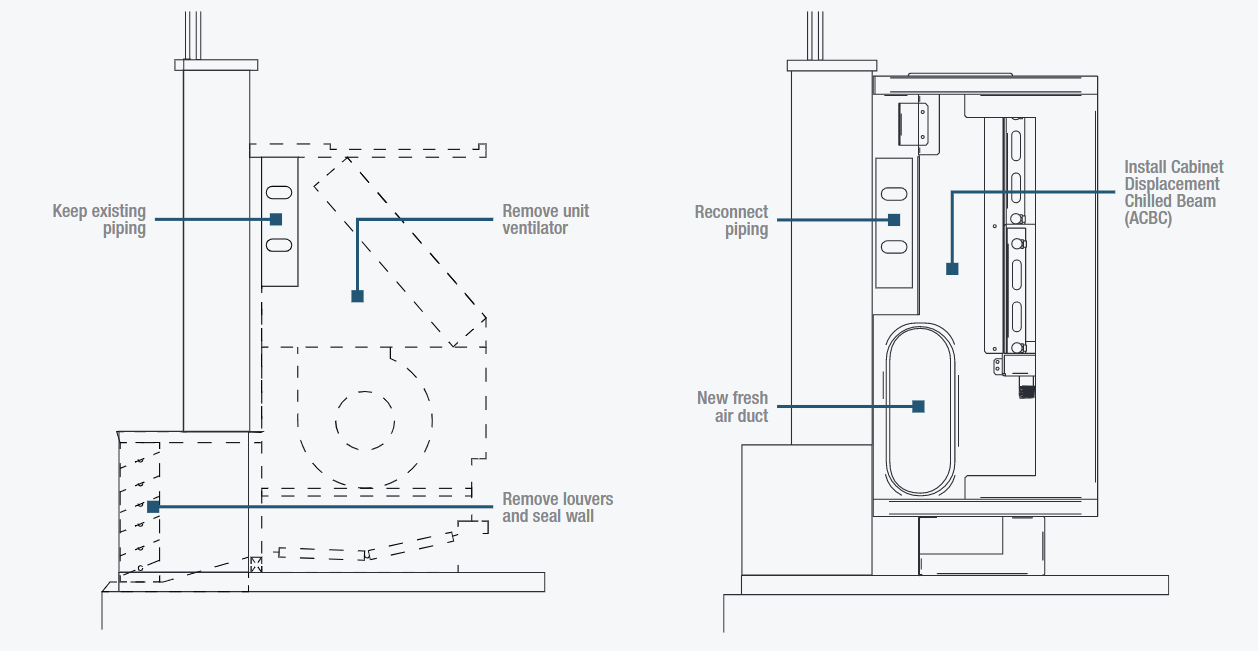Leveraging Displacement Ventilation & Displacement Chilled Beams
There is a growing demand within North American school districts for their schools’ buildings to perform more efficiently within shrinking budgets, while simultaneously accommodating the introduction of new technologies into the classroom and operating for 50-70 years in an ever-changing environment.

As markets continue to adopt evolving standards and building codes that demand lower energy consumption, new solutions will keep gaining traction in school design.
The United States Environmental Protection Agency (EPA) defines a “High Performance School” as “energy and resource efficient.” At Price, we combine our years of occupant comfort design experience with sustainable HVAC technology to assist in achieving High Performance School design goals, reducing operating costs, maintenance and energy usage while improving the learning environment.
Benefits of High Performance Air Distribution in Schools
Displacement Ventilation (DV) is an energy efficient method of air delivery that supplies air directly into the occupied portion of the space at low air speeds. DV improves air quality and occupant satisfaction due to the manner in which the air distributes throughout the space (see Figure 1). Displacement Chilled Beams (DCB) allow engineers to combine the benefits of both chilled beam and displacement technologies into a unified system (see Figure 2).
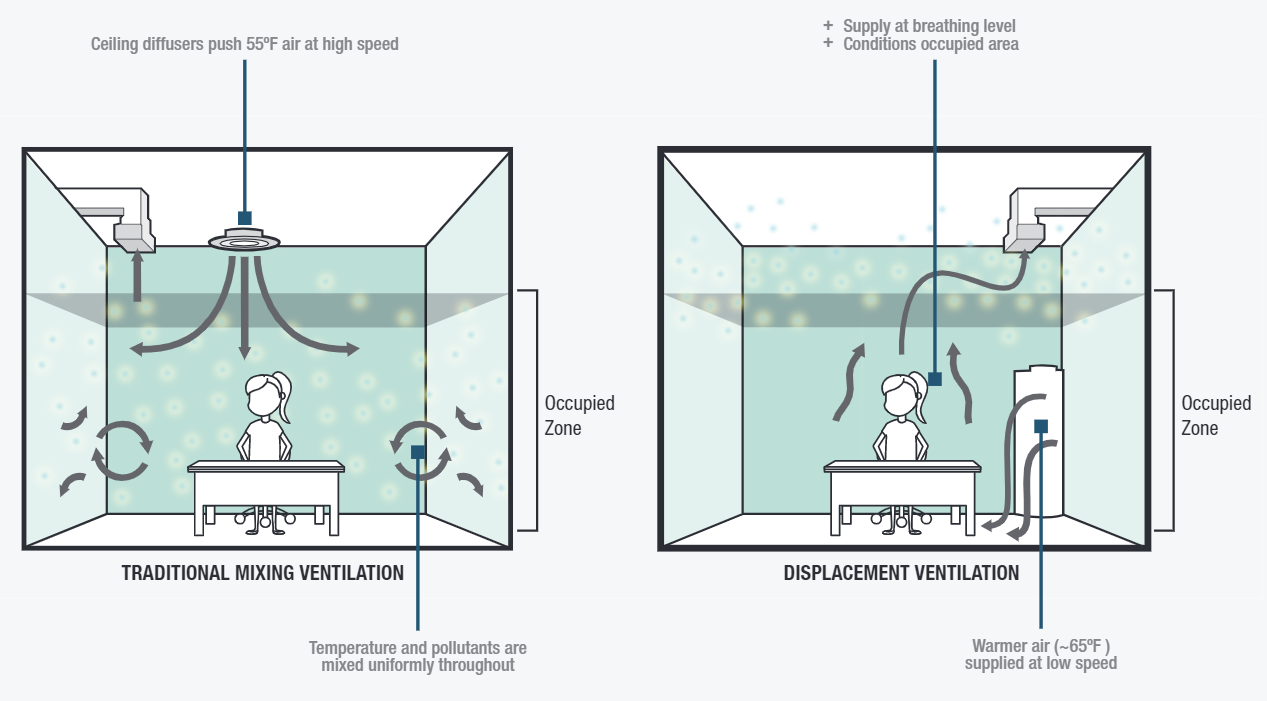
Figure 1: Displacement Ventilation (DV) supplies air directly into the occupied portion of the space at low air speed
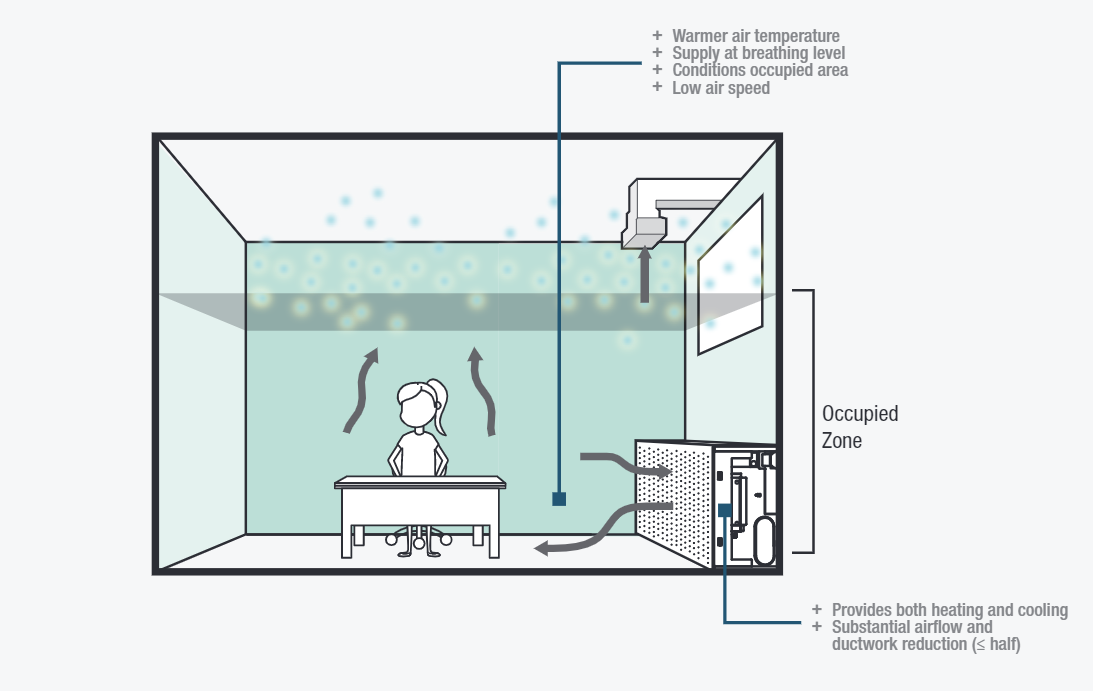
Figure 2: Displacement Chilled Beams (DCB) combine the benefits of both chilled beam and displacement technologies
These systems benefit school systems in particular due to their unique design and operation requirements.
- Low maintenance: Due to DV and DCB systems’ comparative lack of moving parts and mechanical equipment (fans, filters, drain pans and condensate pumps), they typically have lower maintenance costs compared to other systems.
- Low Operating Cost: DV and DCB systems only condition the occupied zone or lower portion of the space. Other inherent qualities, such as higher supply air temperatures and lower air speeds, combine to deliver air efficiently. In combination, this results in significant energy savings that allow for annual funds to be leveraged on other school projects.
- Lower Noise Levels: The use of DV and DCB systems improves acoustics due to the low velocity supply used to deliver the air to the space. This leads to an improved learning environment compared to other traditional systems that rely on high velocity air. Teachers are now able to instruct without raising their voices over the air system, and students in the extremities of the classroom can hear instruction clearly.
- High Indoor Air Quality: Indoor air quality (IAQ) has been proven by several independent studies to have a major impact on the health, performance and attendance of students and teachers. The use of displacement ventilation has resulted in significant improvements in air quality in a number of studies.1,2,3,4
- Improved Thermal Comfort: DV supplies warmer air at lower velocity than traditional air distribution systems, and is driven naturally throughout the space by the heat sources and occupants, providing superior comfort.
- Cost of Ownership: DV and DCB systems are first-cost competitive; once the cost of replacement and maintenance is considered, these system cost less compared to almost any other systems, including a variable refrigerant (VRF) system. The school system can realize even further cost benefits when considering the reduction in energy consumption and resulting lower utility bills.
- Reduced Renovation or Modernization Cost: Owners can achieve the improvements of a high performance system with minimal renovation costs (see Figure 3). A DCB system can be easily installed into a building with existing unit ventilators and chilled water piping by simply adding duct work and reconnecting the chilled water piping. Similarly, buildings with only ventilation and heating infrastructure can be retrofitted by removing the heating coil and ceiling diffusers, adding in the chilled beams, reconnecting the hot water piping and adding in a chilled water supply.
Figure 3: Existing unit ventilator (left) and new chilled beam (right)
High Indoor Air Quality
Indoor environmental quality (IAQ) has been proven by several independent studies to have a major impact on health, performance and attendance of students and teachers. Displacement ventilation has shown significant improvements of the air quality in classrooms on a number of studies conducted. 5,6,7,8
The images below (Figures 4a and 4b) shows provides an illustration of what happens when contaminants, such as exhaled particles, enter the space. In a mixing space the particles released in a sneeze would be mixed throughout the space. In a displacement system the particles are pushed upward, and out of the breathing zone.
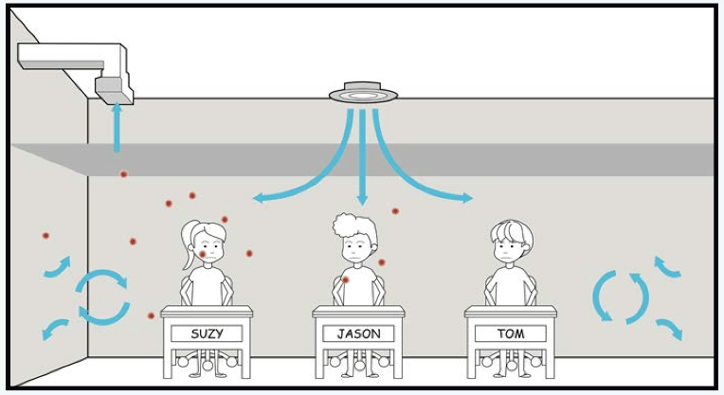
Figure 4a: In a mixing system, exhaled particles (red) are mixed throughout the space
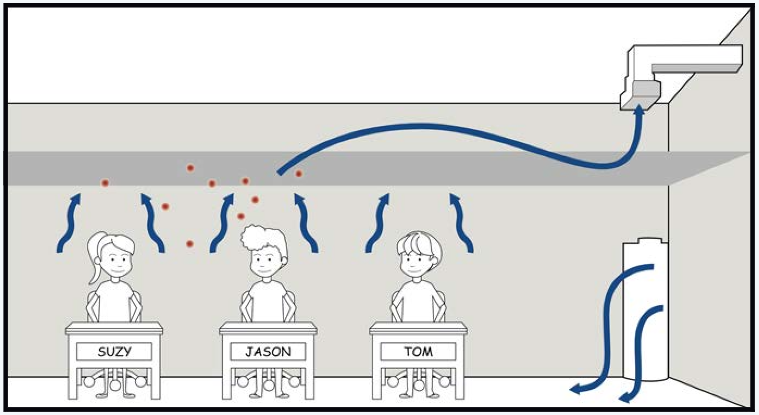
Figure 4b: In a displacement system, the exhaled particles (red) are pushed up and out of the breathing zone
To learn more about how DV and DCB systems can be leveraged for High Performance Schools in your region, please review our High Performance Schools brochure or contact schools@priceindustries.com.
References
1. Arent, J., Eley, C., & Meister, B. (2006). Displacement Ventilation in Action: Performance Monitoring of Demonstration Classrooms. ACEE Summer Study on Energy Efficiency in Buildings.
2. Smedje, G., & Norback, D. (2000). New Ventilation Systems at Select Schools in Sweden - Effects on Asthma and Exposure.
3. ASHRAE. (2013). ANSI/ASHRAE Standard 62.1-2013: Ventilation for Acceptable Indoor Air Quality.
4. Jung, A. and Zeller, M. (2005). Analysis and Testing of Methods to Deter-mine Indoor Air Quality and Air Change Effectiveness. Original technical paper from Rheinisch-Westfälische Technical University of Aachen, Germany, 1994
5. ASHRAE. (2013). ANSI/ASHRAE Standard 62.1-2013: Ventilation for Acceptable Indoor Air Quality. ASHRAE.
6. Arent, J., Eley, C., & Meister, B. (2006). Displacement Ventilation in Action: Performance Monitoring of Demonstration Classrooms. ACEE Summer Study on Energy Efficiency in Buildings.
7. Smedje, G., & Norback, D. (2000). New Ventilation Systems at Select Schools in Sweden - Effects on Asthma and Exposure.
8. Jung, A., and M. Zeller, 2005. Analysis and Testing of Methods to Determine Indoor Air Quality and Air Change Effectiveness. Original technical paper from Rheinisch-Westfälische Technical University of Aachen, Germany, 1994.


